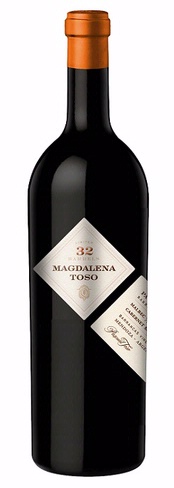Early in his wine career, Felipe Stahlschmidt tended vines for one of the properties owned by the renowned Catena Zapata winery in Mendoza, Argentina. He held a degree in agronomic engineering from the National University of Cuyo in Mendoza and was well-respected for his work in the Catena vineyards — so well-respected, in fact, that when one of the winemakers quit unexpectedly, Stahlschmidt was asked to step into the winemaking job.
"I explained, ‘I know the vineyards; I do not know the winemaking,’" he said over lunch recently. "I asked, ‘Why do you want me for this job?’ They said, ‘Because your focus in the vineyards is always on the quality. That’s what we want in our winemaking, too.’"
With that, Stahlschmidt went back to the university and earned a degree in enology. He also studied winemaking at the University of California, Davis, and the prestigious institute for enology and viticulture in Montpelier, France.
Stahlschmidt spent 13 years at Catena, eventually rising to chief winemaker before moving two years ago to Pascual Toso, a neighboring winery in Mendoza that recently celebrated its 125th anniversary. In addition to its long history in the region, Pascual Toso was also noteworthy because of its relationship with winemaker Paul Hobbs, a rock star-level consultant from California.
Hobbs gained fame in Argentina as the winemaker for Catena through the 1990s, and he deserves much, if not most, of the credit for establishing Catena as a global brand in the international wine market. Hobbs also has his own Mendoza winery, Cobos, as well as numerous properties in California.
Together they form a dynamic duo that positions Toso to compete with Catena, Achaval-Ferrer, Cobos or any of the other big dogs of Argentine wine. With 600 acres, Toso has the luxury of controlling every wine it makes from vineyard to bottle. The estate line, for example, is the winery’s entry-level product — and well-priced at $14 for suggested retail.
As with most Argentinian wineries, malbec is the most successful wine rather than cabernet sauvignon, though the cabernet is very good. And for the big spenders, Toso produces two world-class blends that would be right at home beside the finest classified-growth Bordeaux: the 2013 Magdalena, selling for $130, a blend of 80 percent malbec and 20 percent cabernet sauvignon; and the 2014 Finca Pedregal, selling for $74, which gives a 62 percent nod to cabernet sauvignon and 38 percent to malbec.
These are two of the finest wines I have ever tasted from Argentina. They are stunning for their complexity and structure and destined for a long life if cellared under the proper conditions.
8
